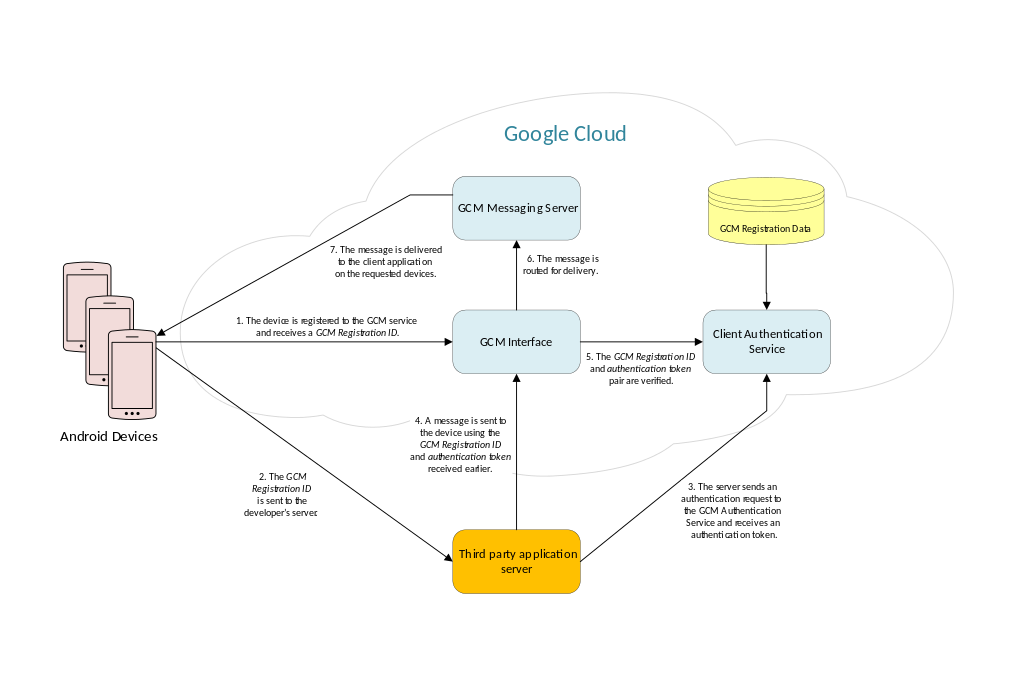
Google Cloud Messaging (GCM) is a free mobile service that enables third party app developers to send messages between servers and client apps. Google pitches GCM as a way to engage users across Android, iOS and Chrome with simple messaging.
GCM allows information to be sent to users’ devices, while also receiving messages from devices on the same connection.
GCM allows for versatile messaging targets, enabling the distribution of messages to a client app in any of three ways – to single devices, to groups of devices, or to devices subscribed to topics.
GCM allows for both downstream and upstream messaging. Enabling a reliable and battery-efficient connection between server and devices, downstream messaging can be used for purposes such as alerting users, chat messaging or starting background processing before a user opens the client app. Upstream messaging allows the sending of acknowledgements, chats and other messages from devices back to the server.

The GCM service was first announced as a successor to Google’s Android Cloud to Device Messaging (C2DM) service, which first featured in Android 2.2. The newest version of GCM is Firebase Cloud Messaging (FCM), with all GCM users strongly recommended to upgrade to FCM in order to benefit from the new features and functionality. The switch to FCM was part of the Alphabet restructuring at Google, with Firebase sitting under the parent company Alphabet.
According to Google, FCM inherited GCM’s core infrastructure, with new SDKs to make cloud messaging development easier.
Upgrading to FCM SDK promises simpler client development, with the need to write your own registration or subscription retry logic no longer required.
The new FCM SDK also delivers an out-of-the-box notification solution – developers can use Firebase Notifications, a serverless notifications solution with a web console that lets anyone send notifications to target specific audiences based on Firebase Analytics insights.
With FCM, developers can send unlimited upstream or downstream messages, handle all aspects of queuing and delivery, optimise for battery efficiency and send messages to individual devices or user segment.
For steps on how to migrate from GCM to FCM, click here







